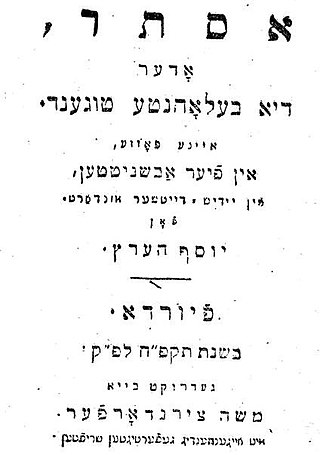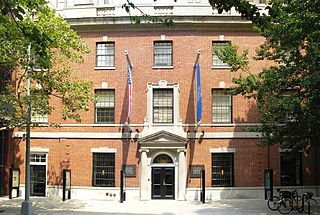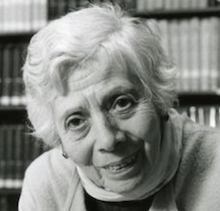Related Research Articles
Dialect refers to two distinctly different types of linguistic relationships.

Yiddish is a West Germanic language historically spoken by Ashkenazi Jews. It originates from the 9th century Central Europe, providing the nascent Ashkenazi community with a vernacular based on High German fused with many elements taken from Hebrew and to some extent Aramaic. Most varieties of Yiddish include elements of Slavic languages and the vocabulary contains traces of Romance languages. Yiddish has traditionally been written using the Hebrew alphabet; however, there are variations, including the standardized YIVO orthography that employs the Latin alphabet.
Knaanic is a tentative name for a number of West Slavic dialects or registers formerly spoken by the Jews in the lands of the Western Slavs, notably the Czech lands, but also the lands of modern Poland, Lusatia, and other Sorbian regions. They became extinct in the Late Middle Ages. Very little is known about their difference from the surrounding Slavic languages. The largest number of samples of Knaanic written in Hebrew script are in Czech; therefore, most commonly Knaanic is associated with Old Czech.
In the field of dialectology, a diasystem or polylectal grammar is a linguistic analysis set up to encode or represent a range of related varieties in a way that displays their structural differences.

Yiddishism is a cultural and linguistic movement which began among Jews in Eastern Europe during the latter part of the 19th century. Some of the leading founders of this movement were Mendele Moykher-Sforim (1836–1917), I. L. Peretz (1852–1915), and Sholem Aleichem (1859–1916). The Yiddishist movement gained popularity alongside the growth of the Jewish Labor Bund and other Jewish political movements, particularly in the Russian Empire and United States. The movement also fluctuated throughout the 20th and 21st century because of the revival of the Hebrew language and the negative associations with the Yiddish language.
Uriel Weinreich was a Jewish–American linguist.
Max Weinreich was a Russian-American-Jewish linguist, specializing in sociolinguistics and Yiddish, and the father of the linguist Uriel Weinreich, who, a sociolinguistic innovator, edited the Modern Yiddish-English English-Yiddish Dictionary.

YIVO is an organization that preserves, studies, and teaches the cultural history of Jewish life throughout Eastern Europe, Germany, and Russia as well as orthography, lexicography, and other studies related to Yiddish. Established in 1925 in Wilno in the Second Polish Republic as the Yiddish Scientific Institute.
Yiddish grammar is the system of principles which govern the structure of the Yiddish language. This article describes the standard form laid out by YIVO while noting differences in significant dialects such as that of many contemporary Hasidim. As a Germanic language descended from Middle High German, Yiddish grammar is fairly similar to that of German, though it also has numerous linguistic innovations as well as grammatical features influenced by or borrowed from Hebrew, Aramaic, and various Slavic languages.

Yiddish dialects are varieties of the Yiddish language and are divided according to the region in Europe where each developed its distinctiveness. Linguistically, Yiddish is divided in distinct Eastern and Western dialects. While the Western dialects mostly died out in the 19th-century due to Jewish language assimilation into mainstream culture, the Eastern dialects were very vital until most of Eastern European Jewry was wiped out by the Shoah.

Yiddish orthography is the writing system used for the Yiddish language. It includes Yiddish spelling rules and the Hebrew script, which is used as the basis of a full vocalic alphabet. Letters that are silent or represent glottal stops in the Hebrew language are used as vowels in Yiddish. Other letters that can serve as both vowels and consonants are either read as appropriate to the context in which they appear, or are differentiated by diacritical marks derived from Hebrew nikkud, commonly referred to as "nekudot" or "pintalach". Additional phonetic distinctions between letters that share the same base character are also indicated by either pointing or adjacent placement of otherwise silent base characters. Several Yiddish points are not commonly used in any latter-day Hebrew context; others are used in a manner that is specific to Yiddish orthography. There is significant variation in the way this is applied in literary practice. There are also several differing approaches to the disambiguation of characters that can be used as either vowels or consonants.

Joshua Fishman was an American linguist who specialized in the sociology of language, language planning, bilingual education, and language and ethnicity.

Nohum Shtif, was a Jewish linguist, literary historian, publisher, translator, and philologist of the Yiddish language and social activist. In his early years he wrote under the pen name Baal Dimion.
Yiddishkeit literally means "Jewishness". It can refer broadly to Judaism or specifically to forms of Orthodox Judaism when used particularly by religious and Orthodox Ashkenazi. In a more general sense, it has come to mean the "Jewishness" or "Jewish essence" of Ashkenazi Jews in general and the traditional Yiddish-speaking Jews of Eastern and Central Europe in particular.

Itsye Mordkhe Schaechter was a leading Yiddish linguist, writer, and educator who spent a lifetime studying, standardizing and teaching the language.

Moshe Shalit was a researcher, journalist, essayist, ethnographer, and humanist of the inter-war period.
Judah Achilles Joffe was a Yiddish philologist.

Dina Abramowicz was a librarian at YIVO and a Yiddish language expert.
Paul Wexler is an American-born Israeli linguist, and Professor Emeritus of linguistics at Tel Aviv University. His research fields include historical linguistics, bilingualism, Slavic linguistics, creole linguistics, Romani and Jewish languages.
Eliyahu "Elye" Spivak was a Soviet Jewish linguist, philologist, and pedagogue.
References
- ↑ Abend, Gabriel (25 July 2023). Words and Distinctions for the Common Good: Practical Reason in the Logic of Social Science. Princeton University Press. p. 225. ISBN 978-0-691-24706-9.
- ↑ Victor H. Mair (2002). The Columbia History of Chinese Literature. Columbia University Press. p. 24. ISBN 9780231528511.
It has often been facetiously remarked... the falsity of this quip can be demonstrated...
- ↑ Mchombo, Sam (2008). "The Ascendancy of Chinyanja". In Brown, Keith; Ogilvie, Sarah (eds.). Concise encyclopedia of languages of the world. Elsevier. p. 793. ISBN 9780080877754.
A recurrent joke in linguistics courses ... is the quip that ...
- ↑ Wolfram, Walt; Schilling, Natalie (1998). American English: Dialects and Variation. p. 218.
- ↑ Blum, Susan D. (2000). "Chapter 3: China's Many Faces: Ethnic, Cultural, and Religious Pluralism, pp. 69-96". In Weston, Timothy B.; Jensen, Lionel M. (eds.). China Beyond the Headlines. Lanham, Md: Rowman & Littlefield. p. 85. ISBN 9780847698554.
Weinreich...pointing out the arbitrary division between [dialect and language]
- ↑ Barfield, Thomas (1998). The Dictionary of Anthropology. Wiley. ISBN 9781577180579.
Fundamental notions such as 'language' and 'dialect' are primarily social, not linguistic, constructs, because they depend on society in crucial ways.
- ↑ "YIVO Bleter (vol. 25 nr. 1)" (in Yiddish). January–February 1945. Retrieved 28 August 2010.
- ↑ "YIVO Bleter (vol. 23 nr. 3)" (in Yiddish). May–June 1944. Retrieved 28 August 2010.
- ↑ "Mendele: Yiddish literature and language (Vol. 6.077)" (in Yiddish). 8 October 1996. Archived from the original on 16 July 2011. Retrieved 28 August 2010.
- ↑ William Bright, editorial note in Language in Society, 26:469 (1997): "Some scholars believe that the [Yiddish] saying is an expansion of a quote from Antoine Meillet, to the effect that a language is a dialect with an army. Up to now the source has not been found in the works of Meillet."
- ↑ Laponce, Jean (2005). La Gouvernance linguistique: Le Canada en perspective. Ottawa: University of Ottawa. p. 13. ISBN 9782760316225.
- ↑ Thomas Burns McArthur, The English languages, p.205
- ↑ George Puttenham, The Art of English Poesie, English Reprints, ed. Edward Arber, London, 1869, p. 156; as quoted in Kamusella, Tomasz (2003). "The Szlonzoks and their Language: Between Germany, Poland and Szlonzokian Nationalism" (PDF). EUI Working Paper (HEC 2003/1): 8.